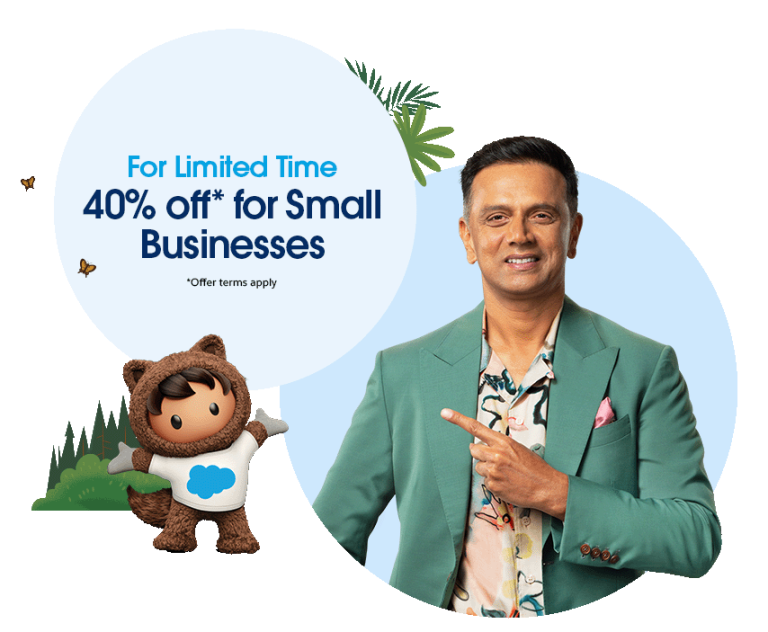Introduction to STP (Segmentation, Targeting, Positioning)
There’s a common saying in the business world, “If you try to be everything to everyone, you’ll end up becoming nothing to anyone.” Far too often, businesses fall into the trap of positioning their product(s) as something that ‘everyone’ benefits from. Their rationale is this: if they cast their net wide enough, they’re bound to catch enough customers soon. This approach is flawed in two ways-
- The company’s resources – budget and employees – get spread too thinly in chasing far-flung customer segments.
- It leads to brand dilution, where the company’s ‘real’ target customers stop seeing value in the brand.
Think about it: you build a product or many products to solve a specific problem. Not all 7.9 billion people in the world would have that problem. Even if your product is something as essential as a toothbrush, it has to stand out from the existing toothbrushes in the market in some way to bring in sales.
Say, from the media and your conversations with friends you notice that an increasingly large number of people are moving towards sustainable living. You strike up this idea of creating toothbrushes out of bamboo shoots.
At the very outset, you plan to target all the toothbrush users by positioning your product as an environmental-friendly alternative to plastic brushes. This strategy is going to create a negligible impact, almost like a drop in the ocean.
This is because 85% of your audience doesn’t care for sustainable living. While you could still go after them by creating awareness, you need to first educate them on the adverse effects of using plastic on the environment. Tell them how your product addresses the issue, and finally, how it benefits the customer individually.
This is a long-drawn process that can strain your time and budget while giving minimal returns. You’d fare better targeting the other 15% – people who are already looking for sustainable alternatives. They’re already aware of ‘why’ they need your product, so you can go ahead and directly pitch it to them.
By skipping the motions, you save on resources and use them where they are needed the most. Also, since your target’s needs are aligned with your product offering, the customer acquisition cost is low.
The above scenario is an apt use case for the segmentation, targeting, and positioning model of marketing. Now that we have some context, let’s dive deeper into what the segmentation, targeting, and positioning (STP) model is.
Salesforce for SMBs
Now at Special Pricing
For the first time, Salesforce India is making it easier than ever for Indian SMBs to compete — and win.
For a limited time, get 40% off our flagship solutions — Sales Cloud, Service Cloud, and Marketing Cloud — along with fast-track implementation packages, to go live in just 2 weeks.

What Is STP marketing?
Segmentation, targeting, and positioning (STP) is a marketing model that redefines whom you market your products to, and how. It makes your marketing communications more focused, relevant, and personalised for your customers.
In short, STP is a marketing approach where you segment your audience, target the best-fit audience segments for your product, and position your product to capture your target segment effectively.
The STEP Formula
The easiest way to remember the STP model is through the STEP formula, which is
Segmentation + Targeting = Positioning



A closer look at this formula tells us that the product positioning for each target segment is different. This forms the essence of the STP (Segmentation, Targeting, and Positioning) marketing model.
Let’s take a closer look at each of these parts of segmentation, targeting and positioning.
Segmentation: Identifying Your Market
When you start creating a GTM strategy for your product, you have an idea of who your audience is. You can target the entire group that fits the broad definition of your audience, but chances are a generic message may fail to resonate with a huge chunk of that group.
Segmenting the audience into smaller groups based on specific attributes gives you better clarity on who benefits the most out of your product and how. With this clarity, you can make your messages more focused and relevant to target groups.
While you can segment your audience using any criteria that best suits your business, the below criteria are commonly used:

How do you get started with segmentation?
To perform audience segmentation, you first need to know about your audience. Solutions such as Salesforce CDP (Customer Data Platform) allow you to unify data from across touchpoints – like sales, service, marketing – and use Artificial Intelligence (AI) to mine richer audience insights from it. You can enrich this with first-party data from other platforms like social media, websites, customer forums, etc. This helps marketers build a single, comprehensive view of all audiences using a central, user-friendly interface. With an accurate population count and AI-enabled features, you can create highly targeted and customised audience segments.
Segmentation gets you better results even when you’re nurturing your existing subscribers. Using tools like Salesforce’s Email Studio, you can segment your current subscribers’ list based on their profiles and send targeted email campaigns, improving your open and click rates. Segmenting your existing customer base also helps you make an informed guess about your larger audience. By extrapolating current customer data, you can identify potential audience segments and build your marketing strategy around them.
Segmentation with an example
Suppose your product is plant-based milk. Your general audience is people who want to move away from dairy-based products. You can segment this audience into two categories:
Segment A: people who are looking at dairy-free alternatives for lifestyle purposes, typically high-income groups.
Segment B: lactose-intolerant people looking for other options.
The message you use for these two segments is obviously going to be different from each other. Using tools like Data Studio, you can further segment the above two segments into groups that already use a competitor product and those that don’t. You can then hone your messaging according to it.
Targeting: Reaching the Right Audience
The next step in the STP model is targeting. This is the stage where you decide which segments you created during the segmentation phase are worth pursuing. You should ideally consider the below criteria to choose your targetable segments:
Size: Your audience segments must have enough potential customers to be worth marketing to. If your segments are too small, you may not get enough conversions to justify your marketing efforts.
Difference: There should be a measurable difference between any two segments. The lack of it leads to unnecessary duplication of efforts.
Reachability: The segments should be accessible to your sales and marketing teams and not be marred by technical or legal complications.
Profitability: The segment should have a low-to-medium customer acquisition cost (CAC) while bringing in high returns, i.e., the audience must be willing to spend money on your product.
Benefits: Different benefits attract different segments. In our plant-based milk example, Segment A would go for cruelty-free while Segment B for dairy-free.

Knowing which audience segments to target comes from having all-around visibility of those segments in one place. This makes comparing segments and weighing the pros and cons of targeting some segments over others easier.
In our example of plant-based milk, you’ve determined through research that veganism is all the rage, and roughly 60% of the people are searching for dairy-free alternatives. You also discover that approximately 80% of the people in your chosen demographic are lactose intolerant. Though the audience size is more significant in the second segment, you’re likely to get more returns when you go after the first segment as it consists of high-income groups who are ready to pay a premium for quality lifestyle-changing products.
Salesforce CDP helps unify such audience and customer data from multiple sources to get more comprehensive insights. With more data and insights, segmenting and targeting your audiences becomes much more precise and granular. Then, you can translate all of this data into action by using a tool like Journey Builder to create highly personalised and relevant journeys throughout customer lifecycles.
Positioning: Differentiating Your Brand
The final stage of the STP model, positioning, is where you use the insights gained from segmentation and targeting to decide how you’re going to communicate your product to chosen audience segments.
While segmentation and targeting are about customers, positioning is about your product from the customer’s perspective. You can consider positioning as the bridge that connects your product with the audience. This is the stage where you perform competitor analysis, figure out your value proposition, and communicate that to your customers.
Based on what your brand stands for, you can position your product in several ways. If you’re in the luxury market, you can appeal to the ‘desire for prestige’ among customers by positioning yourself as a status symbol. Or, if you fall in the budget category, you could differentiate yourself by offering more benefits to your target at a lower cost than your competitors.
The best way to approach positioning is by drawing a Product Positioning Map that has two key market attributes as its axes and plotting your competitors and you in it. This will give you a clear picture of how you stack up against your competition and where you should place your product to maximise profits.

How to make STP marketing actually work
Now that you’ve narrowed down your market, sharpened your segments, and have an attack plan, all that’s left to do is craft and deliver your message. This is where a core concept – personalisation – comes in. Looking back, the entire segmentation, targeting, and postioning model is geared towards making marketing personalised for customers, so your message and the channels through which you communicate it should reflect that.
Luckily, some solutions help you meet customers where they are and drive personalised, 1-to-1 engagement with them.
Salesforce Marketing Cloud offers a product suite that enables marketers to hyper-personalise every interaction across channels. Here’s how:
- Salesforce CDP allows you to unify all your customer data and build finer audience segmentation for better targeting
- With Email Studio, you can segment your subscribers using drag-and-drop, and deliver 1-1 marketing messages
- Social Studio lets you listen to customer conversations about your brand on social channels and engage and support customers on their preferred channels
- Using Advertising Studio, you can launch paid digital advertising to create 1-1 customer experiences
- Interaction Studio allows you to manage all your marketing interactions in real time so you can offer a personalised experience across touchpoints
- Journey Builder enables you to create personalised experiences at every touchpoint and stage of the customer lifecycle
- You can drive higher RoI by using Datorama‘s analytics and reporting features
- With Pardot, you can build greater sales and marketing alignment to perform personalised, automated marketing at scale
- Manage all your mobile messaging efforts using Mobile Studio
- Delight and engage your best customers with Loyalty Management
- Combine the power of Salesforce and Google by integrating Google Analytics 360 into Marketing Cloud
Benefits of STP marketing
Improved engagement: Because you’re targeting precise audience segments with personalised messages, your audience finds you relevant and is more likely to engage and convert.
Reduced marketing costs: Since you’re going after only those segments with a high potential return on investment, you’re no longer wasting your budget on channels and segments that don’t work.
More robust product: Because you know precisely whom you’re pitching your product to, you can make improvements based on feedback from that audience segment, fostering focused product innovation.
STP case studies
Apple
Apple has nailed the STP model. It positions itself as a lifestyle, targeting those audience segments with a keen design aesthetic, who want to stand out from the crowd, and are well-off. Apple follows a “closed” software ecosystem with an emphasis on security. In doing so, it creates an aura of exclusivity that makes people feel privileged to own Apple products. Apple’s STP model works so well that the brand name has become synonymous with expensive, high-performance, luxury gadgets.
McDonald’s
McDonald’s name evokes images of a family with kids enjoying a ‘happy meal’ of burgers, fries, and Coke. McDonald’s target audience is low to middle-income segments, and it positions itself as an accessible, budget-friendly brand, consciously staying away from the luxury fine-dining market. You can find a McDonald’s on almost every street, which is a sign of its accessibility.
Apart from segmenting its audience by their income, McDonald’s also does geographic segmentation quite well. It customises its menu for each country based on cultural preferences, making it more appealing to its target audience segments.
Godrej Group
Godrej Group is a very popular and trusted Indian company that is serving customers across product categories – from household goods to real estate. Every Indian household is aware of Godrej’s products like furniture and locks. But to engage and make aware customers of other product categories as well, Godrej has adopted social listening as a tactic to identify what their target audiences are talking and reading about. They are using audiences’ content consumption patterns to shape their content marketing strategies in a manner that deliver maximum engagement and awareness.
Coca-Cola
Coca-Cola is one brand that has the entire world as its market. But it also has cut-throat competition in the form of another brand, Pepsi. To gain a competitive edge over Pepsi, it introduced new variants such as Diet Coke and Coke Zero to target niche, health-conscious audience segments. It also brought in more flavoured variants to target the younger, experiential population.
Beyond segmentation and targeting, Coca-Cola positions itself as a drink that brings families and friends together. This is evident from its advertisements, which typically feature get-togethers, festivals, and celebrations in which Coke plays an integral role.
How to create an STP model for your business: Implementation strategy
We’ve covered the basics of the STP marketing model with benefits and examples. Now, it’s time to get down to the brass tacks; that is, see how you can implement a segmentation, targeting, and positioning model for your business step-by-step.
Step 1: Define your market
The world may be your market, but breaking it down into manageable segments is how you conquer it. To know the market segment in which you can hit the bullseye, you start by defining your Total Available Market (TAM), Serviceable Available Market (SAM), and Serviceable Obtainable Market (SOM). Let’s look at what each of these is:
Total Available Market (TAM): TAM is the total market demand for a product or service. In other words, it’s the biggest available market for the brand. TAM is the maximum revenue that a business can generate if it achieves 100% of its market share.
Serviceable Available Market (SAM): SAM is a subset of TAM, that is, a portion of the total available market that fits your product or service. You can define SAM by geographical or product specialisation constraints.
Serviceable Obtainable Market (SOM): SOM is a subset of SAM, that is, the segment of the serviceable available market that you can realistically reach after considering factors like product differentiation, budget, and competition.

In the case of Coca Cola, its TAM is the entire beverage market, while its SAM would be soft drinks. Its SOM is the market that Pepsi does not capture. For Diet Coke, the SOM would be health-conscious, sugar-free drinkers.
Step 2: Create audience segments
Now that you know your market definition, you can segment the audience within that definition.
You can segment the audience based on geography, demography, behaviour, or psychography, but ideally, a mix of all four can help you achieve clearly differentiated segments. The more segmentation layers or variables you add, the more delineated your segments would be.
For example, suppose you’re selling a luxury makeup product. In that case, you can target high-income working women (demographics) in India (geography), who follow makeup handles on social media (behaviour) and are willing to spend money on premium makeup products (psychography).
This kind of repeated layering and segmentation creates focused audience groups that you can target with hyper-personalised messages. Research by McKinsey found that companies that excel at personalisation generate 40% more revenue from those activities than average players.
Step 3: Identify the more attractive segments
Have all the segments data in one place and evaluate the attractiveness of each segment. You can use metrics like return on investment, segment size, and growth potential in your evaluation. Again, solutions like Salesforce Data Studio and CDP help gather data and get comprehensive visibility into different audience segments, improving segmentation.
Step 4: Evaluate your competition
With your audience segmentation sorted, it’s now time to look at your product and determine how it stacks up against your competition. Prepare a table that lists down all of your product capabilities and your competition’s, do a SWOT analysis, identify gaps, and figure out the most viable entry point into your desired customer segment.
Step 5: Fix your positioning
The groundwork on segmentation and targeting is now out of your way, so you can focus on positioning your product to grab the lion’s share of the market. You can follow any one or a mix of the following positioning strategies:
- Competitor-based positioning: where you show in what aspects better than your competitor.
- Consumer-based positioning: how well your product aligns with consumer needs.
- Price-based positioning: how you’re competitively priced and give customers more value for their money
- Benefit-based positioning: how your customers benefit from buying your product, either individually or over your competition.
- Attribute-based positioning: what your unique selling point or value proposition is, above and beyond benefits and price.
- Prestige-based positioning: how customers get a status boost from buying your product.
Step 6: Determine your marketing mix
The final step of the segmentation, targeting, and positioning model is to choose your ‘marketing mix’ that helps reinforce your positioning. The marketing mix consists of four Ps – Product, Price, Placement, and Promotions.
Product represents factors like quality, benefits, features, design, services, support, availability, and edge over the competition.
Price reflects what customers are willing to pay for the product. It covers list price, discounts, payment methods, etc. Pricing your product much lower than your competitor might fetch you immediate benefits but will be detrimental to revenue in the long run.
Placement covers “where” your product is available. It includes ecommerce, physical stores, inventory, logistics, trade channels, etc.
Promotion takes into account “how” your product reaches your customer. It covers marketing campaigns, advertising, public relations, sales promotions, word of mouth, influencer marketing, and so on.
Conclusion
STP model is a scientific, tried-and-tested marketing approach that helps businesses identify segments where they can indeed provide value, personalise their marketing communications, and reap sizeable profits.
If you want to get started on your segmentation, targeting, and positioning journey, you could give solutions like the Salesforce Marketing Cloud a try. The products inside Marketing Cloud provide you deep insights about your audience, help you identify the most viable segments, and hyper-personalise communications across channels, leading to 1-1 customer connect.

























